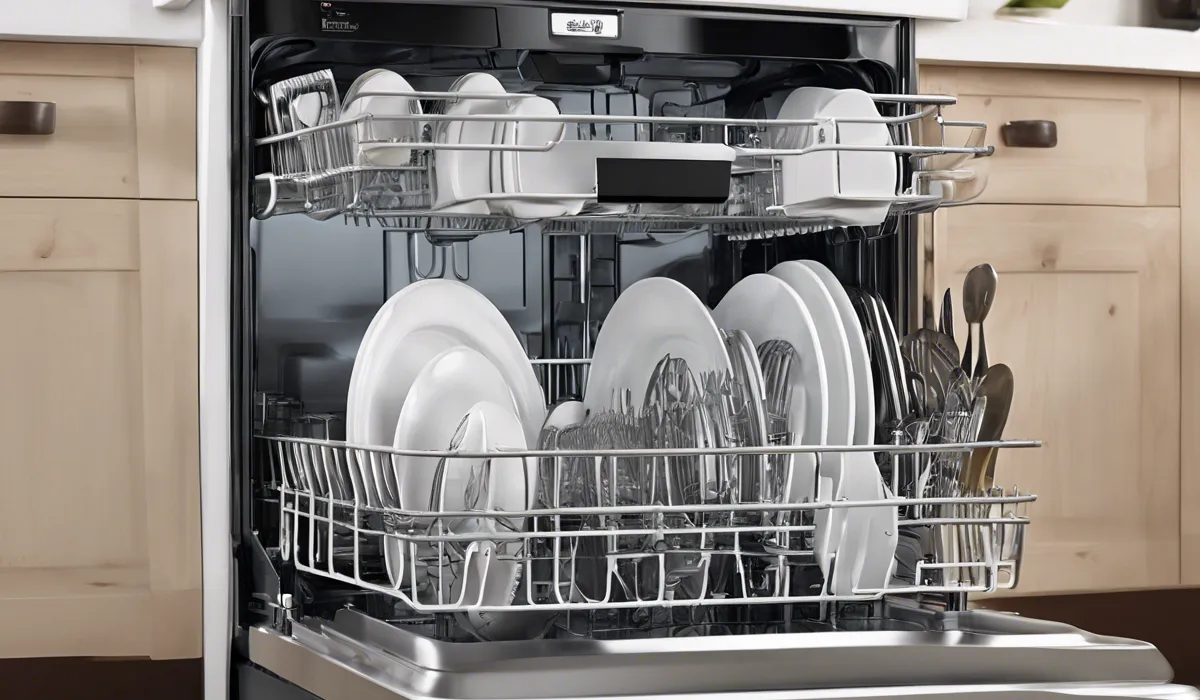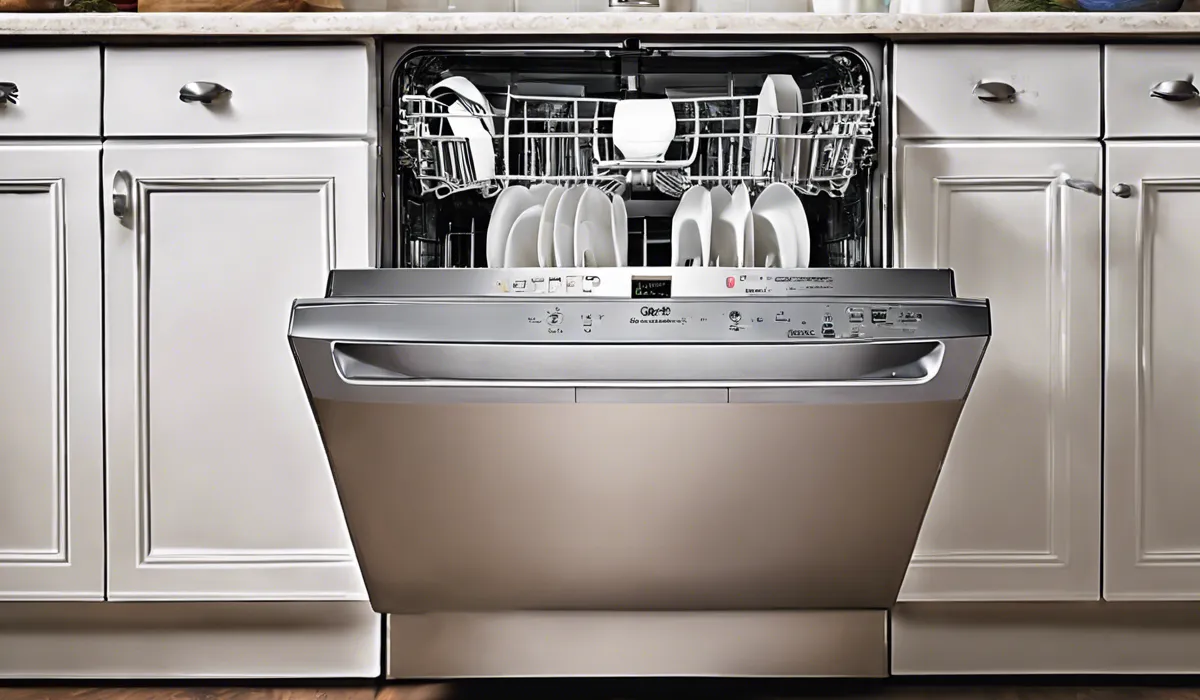How to Use a Dishwasher GE: Quick & Efficient Cleaning Tips
To use a GE dishwasher, load your dishes, add detergent to the dispenser, close the door, select the desired cycle, and press start. Ensure nothing obstructs the spray arms before operation.
Understanding Your GE Dishwasher

Overview of Different Models and Their Features
General Electric offers a variety of dishwasher models, each boasting unique features tailored to different washing needs.
From standard built-in dishwashers to portable and under-the-sink models, the selection caters to various household sizes and preferences.
Features may include stainless steel interiors, steam prewash options, bottle jets, and smart technology that allows for Wi-Fi connectivity and mobile control. Understanding the specifics of your model is key to maximizing its potential.
Importance of Reading the User Manual Specific to Your Model
To ensure you are using your GE dishwasher correctly, it is crucial to read the user manual that comes with your specific model.
The manual contains important information about installation, operation, and maintenance, as well as safety instructions and troubleshooting tips.
It will also explain the unique features and settings that come with your dishwasher, helping you to get the best clean for your dishes.
Identifying the Main Components
Before operating your GE dishwasher, familiarize yourself with its key components. The detergent dispenser is where you will add cleaning agents, while the rinse aid compartment helps in the drying process.
Wash arms spray water during cycles, and the filter captures food particles. The control panel is your command center for setting cycles and customizing options. Each part plays a pivotal role in the cleaning process.
Preparing to Use Your GE Dishwasher

Pre-Rinse Debate: Pros and Cons
There’s an ongoing debate on whether to pre-rinse dishes before loading them into the dishwasher.
Proponents argue that it removes food particles and prevents clogs, while opponents claim today’s dishwashers are powerful enough to handle soiled dishes.
Pre-rinsing can waste water, but not doing so might result in items needing a second wash. Consider your dishwasher’s capabilities and the degree of dish soil when deciding to pre-rinse.
Proper Loading Techniques for Dishes, Silverware, and Glasses
Maximize your dishwasher’s efficiency by loading it properly. Place dishes with soiled surfaces facing the spray arms, and avoid nesting silverware to ensure water reaches every piece.
Glasses should be placed on the top rack at an angle to prevent water pooling. Proper loading not only ensures a thorough clean but also protects your dishes from damage.
Choosing the Right Detergent and Rinse Aid
Selecting the appropriate detergent and rinse aid can greatly impact the cleaning power of your GE dishwasher.
High-quality detergents dissolve food residues effectively, while rinse aids prevent water spots and enhance drying. Be sure to choose products suitable for your dishwasher’s model and water hardness.
How to Fill the Detergent Dispenser and Rinse Aid Compartment
Filling the detergent dispenser and rinse aid compartment is straightforward. Add the recommended amount of detergent to the dispenser before each wash.
For the rinse aid, fill the compartment according to the manufacturer’s instructions, and adjust the setting based on the water hardness and desired drying performance.
Selecting the Appropriate Wash Cycle for Your Load
GE dishwashers offer various wash cycles for different types of loads. For heavily soiled pots and pans, a heavy cycle is best, while a light cycle is suitable for glasses and lightly soiled items.
Some models also feature an auto-sense cycle that adjusts the wash settings based on soil levels.
Adjusting Settings for Hard Water or Energy-Saving Preferences
If you have hard water, you may need to adjust the dishwasher settings to prevent mineral buildup.
Additionally, many GE models offer energy-saving features such as EcoWash or delayed start, which can help reduce your energy consumption and lower utility bills.
Running and Maintaining Your GE Dishwasher

Step-by-Step Instructions on Starting a Wash Cycle
To start a wash cycle, ensure that the dishwasher is properly loaded and detergent is added.
Close the door firmly, select the desired cycle on the control panel, and press the start button. Make sure that the spray arms are not obstructed to allow for an effective wash.
Understanding the Cycle Progress Indicators
Your GE dishwasher will have indicators to show the progress of the wash cycle.
These may include lights or sounds that signal when a cycle is complete, or a countdown display for the remaining time.
Monitoring these indicators will help you know when your dishes are clean and ready to be unloaded.
Tips for Unloading Dishes for Optimal Drying
For best drying results, unload the lower rack first to prevent water from the upper rack dripping onto it.
Allow steam to escape after the cycle is complete by opening the door slightly, which can help further dry the dishes.
Routine Cleaning and Maintenance
Regular cleaning and maintenance are essential for your dishwasher’s longevity. Clean the filter and unclog the spray arms as needed to maintain water flow. Check the door seal for debris to prevent leaks.
These simple tasks can prevent future issues and ensure your dishwasher operates efficiently.
Troubleshooting Common Issues and When to Call for Service
If you encounter issues such as dishes not cleaning properly or the dishwasher not draining, refer to the troubleshooting section of your user manual.
Some problems can be easily fixed, like ensuring that the spray arms are free to rotate. However, if the issue persists, it may be time to call for professional service.
Best Practices for Long-Term Care and Efficiency
To maintain your GE dishwasher’s efficiency over time, run it regularly, keep the spray arms and filter clean, and use the correct detergent and rinse aid.
Also, consider using cycles that match the soil level of your dishes to conserve water and energy. Following these best practices will help keep your dishwasher running smoothly for years to come.
FAQs About Using a GE Dishwasher
What is the correct way to load dishes in a GE dishwasher?
To load a GE dishwasher, place dishes with their dirty surfaces facing the spray arms, avoid nesting or overlapping items, and ensure that tall items do not obstruct the spray arms’ rotation.
Where do I put the detergent in a GE dishwasher?
Add detergent to the designated dispenser compartment, usually located on the inside of the dishwasher’s door, before starting the cycle.
How do I select a cycle on a GE dishwasher?
Select the desired cycle by pressing the appropriate button or using the control knob on the dishwasher’s control panel, then press the start button.
What should I check for before starting my GE dishwasher?
Before starting your GE dishwasher, ensure that nothing is obstructing the spray arms and that the detergent dispenser is filled properly.
Can I interrupt a cycle on my GE dishwasher?
Yes, you can usually interrupt a cycle by opening the dishwasher door or pressing the start/pause button, but refer to your specific model’s manual for instructions on resuming the cycle.
Final Thoughts
Operating a GE dishwasher is straightforward: Load the dishes, ensure no blockages for the spray arms, add detergent, and close the door.
Select your cycle choice, then press start. Adhering to these steps will help maintain the efficiency of your dishwashing routine.





